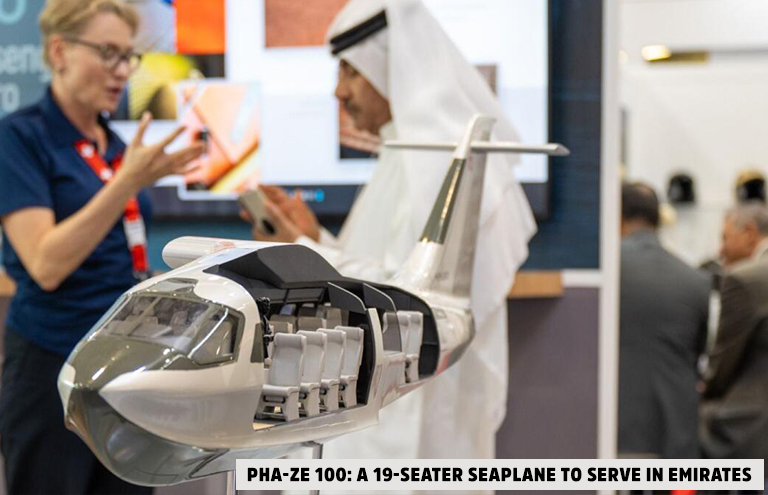
PHA-ZE 100: A 19-Seater Seaplane to Serve in Emirates
A prototype model of a traveller seaplane with a capacity to carry 19 passengers at a time is rapidly obtaining traction in the transportation market of the United Arab Emirates. The seaplane is completely powered by electricity.
The Swiss electric seaplane manufacturer company, Jekta has showcased their brand new creation at the grand occasion of Dubai Airshow. The innovative and unique design intends to offer a more cost-effective and sustainable transportation solution for the residents living in coastal regions and megacities in the United Arab Emirates.
PHA-ZE 100 or Passenger Hydro Aircraft Zero Emissions is an amphibian aircraft that is slated for its grand market entry by 2028.
Based on the sources, Jetka, the seaplane manufacturer is currently undergoing the development of phase 100. The seaplane is a fully electrically powered, regional amphibious flying boat, with 19 seats. According to Jane Stanbury, Head of Communications of Jetka, Flying Boat is something, which means that it lands with the whole body structure, not with the floats. There is a major and a huge difference. The whole-body landing will be able to give more stability and equally, enlarge the capacity of its operational moves. For being an amphibious aircraft body this seaplane will be capable of landing on any waterbody, which could be a sea, a river, or a lake.
Lower Fare for Passengers
The seaplane PHA-ZE 100 is completely operative with an eclectic source of power, which means there will be absolutely zero percent chance of leaving any emission at any cost. It will also allow the passengers to travel in an environment-friendly manner, alongside the travel will cost less, and be extremely safe.
“One of the key elements of this aircraft is that it’s aiming to reduce operating costs by up to 70 percent. That means passenger price fares will be lower, yet the operator will still make a profit,” Stanbury said.
She further added, “The reason they can do it is because it’s not a regular engine, there’s no maintenance required. It has carbon fiber. It’s very easy to maintain. So, that reduces the operating costs. The potential is huge.”
The high rise in cargo and passenger transport soon after the pandemic in 2022 caused and witnessed a 3 percent upsurge in carbon dioxide emissions scale from transportation as compared to the previous year.
Starting from 1990 till 2022, the displayed transport emissions have shown an average annual growth of 1.7 percent, surpassing all the other sectors except the industry, which has grown at a similar rate as well.
To meet the goal of the NZE or Net Zero Emissions by 2050 it must require a reduction of over 3 percent emissions of carbon dioxide yearly through the transport sector till 2030.
Jane Stanbury, Head of Communications of Jetka said, “The idea behind it is to connect those that are separated by large tracts of water. Countries that have that are island nations like Malaysia Philippines, and Thailand. In India, they have a development for 94 waterway routes. I see much potential in the Middle East. It is like an experiential travel. You could put kayaks or could put scuba gear. Imagine you take off from Dubai, you go to the sea, you dive where you land, get back on board and you fly back to Dubai. So, it’s a very flexible, multifunctional, and multi-service operational vehicle.”
According to Stanbury’s description, the first LOI or the Letter of Intent has been signed between Jekta and a Dubai-based company, with a mutual agreement for the procurement of 10 aircraft.

 Previous Article
Previous Article